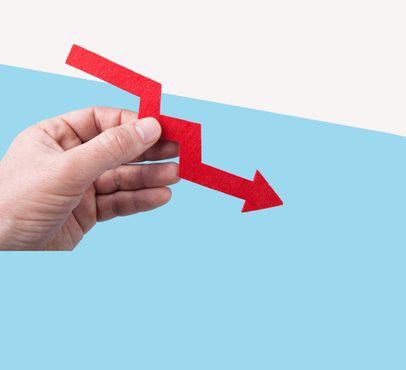What if in forcing the sales message — pushing that hard — we’re disregarding those people whose desire to purchase is there, but for whom there are barriers to completion at this point?
What would you say if we told you that 95% of your potential customers are not in the market for what you’re selling right now, but they will be at some point soon?
This is the 95-5 rule.
“The 95-5 rule shows that 95% of your potential buyers aren’t ready to buy today. This 95% are “out-market” today but will be “in-market” sometime in the future.”
What does this mean? It means your current attribution modelling, your sales funnel and your decision to pull anything from which you don’t see an instant return are no longer serving you.
Let’s explore how the 95-5 rule really impacts your marketing and what you can do to maximise your return on investment and encourage that 95% back when the time is right, for them.
The 95% and the death of the sales funnel
We’ve talked a lot about the traditional sales funnel becoming defunct. In summary, the digital landscape has, and continues, to change the way we shop. With information at our fingertips, and a progressive wave of e-commerce opportunities, sales can simply be a swipe away or may be a result of exhaustive research. We have to value each and every path to purchase.
With privacy and tracking changes making it harder than ever to attribute sales to a channel, we must look more holistically, and patiently at how our customers convert over time.
Our path to purchase doesn’t look the same as it did when the sales funnel was first introduced way back in 1898.
Yes, you read that right. Taking into account many twists, turns and alternative models, including the Hankins Hexagon and The Messy Middle, we’ve chosen to create our own, The Messy Hexagon. For us, the Messy Hexagon shows the most true to life version of our experiences with the digital sales funnel/process.
To successfully stay present and meet your customers on any point of this complex journey, you need to be visible, your marketing needs to be consistent and you need to be ready to invest in longer-term conversions.
Understanding what influences a purchase
This is a vital part to accepting and working within the Messy Hexagon model - it’s knowing what can intercept and stall a purchase and what can encourage one along. There are more marketing touchpoints than ever, so it’s important to recognise what you’re up against.
“Customer journeys are getting longer and longer. In fact, 52% of companies reported that they have sales cycles lasting up to 3 months, while 19% have sales cycles longer than 4 months.”
So, first we must understand what constitutes a touchpoint and then what the challenges and speed bumps are that can get in the way of that goal completion.
More touchpoints = more chance of making the sale
In today's digital world, there are many, many ways for a customer to find you or have their opinion about your brand reinforced (positively, we hope). So how many touchpoints does it take to convert someone? Well, spoiler, it’s probably more than you think.
Some research indicates it could be an average of eight, but this is dependent on industry — so could be more (or, indeed, less). The message is clear: the more touchpoints you hit, the better. This could include...
Organic search engine results
Press coverage and articles
Customer reviews
Paid or organic social media posts
Paid media (pay-per-click, display ads, Google Shopping, YouTube, Amazon)
Influencer collaborations
The touchpoint journey is complex. Picture the scene: there’s a ‘nice to have’ pair of new football boots that launched this week. They look amazing — but the car needs new tyres soon, the water bill's coming out tomorrow, the cat's almost out of dry food. So you save that social post screenshot, you think you’ll get it next month.
Then someone mentions they've tried the boots. The leather is truly incredible, apparently. It comes flooding back to mind how much you still want them.
Then, the product pops up as a retargeting ad, or before a YouTube video. So you revisit the site through Google, but decide money's still a little tight — so you say to yourself 'next month' (or you wait to see if there’s a Black Friday email deal).
In this scenario, you are and always have been a hot lead, a customer just on the brink of conversion, but the time wasn’t right. By the time you are ready to purchase, you have possibly interacted with upwards of four or five touch points over the course of several weeks or months.
Factors that may impact the sales journey include:
Time until payday
Life stage
Seasonality (perhaps Christmas means your customers won’t be spending on themselves just now)
Research time need/significance of investment
Distractions
Demand for the type of product in general
Economic stability or lack thereof (nationally)
If you take into account how this may vary for different industries, you start to see the value in thinking - and working - longer term. Decisions about purchases for small household items can take months, so scale this up to trips, holidays, cars and larger, big-ticket items and suddenly the journey through that Messy Hexagon could legitimately be a lot longer than you thought.
This is why your marketing needs to be built for this slow burn world. The hottest leads and the 5% in the market right now will buy, they’ll be your bread and butter. Don’t be complacent of course, we want to retain their attention too, but you’re focusing on converting that 95% when making campaign and budget decisions especially.
If you’re the company pulling ads after the first run because you didn’t see a return and scrapping campaigns after a week, you are failing to recognise their place in the path to purchase.
Reflect, refine yes, but don’t bolt because you didn’t see instant results; look at the graphs overall, the people buying now probably saw that ad you ran four weeks ago, and that UCG you used last week… breaking this cycle only damages your chances of being the brand they want when the time is right for them.
This doesn’t mean you can’t be careful, selective with your marketing if required, but it means stopping all together could do much more harm than good.
It is tempting to pull marketing in times of financial instability, it’s usually the first thing to go. However, people will always spend money, even if it’s less, so your presence is more important than ever to ensure they choose you when they do commit. There's real importance to continuing marketing during a downturn.
A quick note on attribution by marketing channel
These challenges are further complicated by the fact most channels have limited and varying attribution windows and settings, which means they may not be getting the credit for converting or consolidating sales which fall outside of those parameters.
For example, here are the default attribution settings for some common marketing channels:
Meta Ads - 1 day view or 7 day click is the default setting, but you can also select 1 day click, 7 day click, and 1 day click or 1 day view. They’ve recently re-introduced 28 day click attribution reporting (but ads can't be optimised for this...yet).
TikTok - click through can be set to 1, 7, 14 or 28 days, and view through can be set to 1 or 7 days.
Pinterest - this is known as a ‘lookback’ window and can be 30 days, 7 days or 1 day
LinkedIn Ads - The default view-through is 7 days and click is 30 days, but these can be customised to 1 day, 7 days, 30 days, or 90 days.
Google Ads - The default is 30 days, but it can be set to anything from 1 to 90 days. The window is set at the conversion level, so you can set different conversion windows for each action you are tracking.
Viewing this data in this context can sometimes lead you to think that your activity isn't working - remember we said that over half of companies in a recent report said their buying cycle is up to 3 months - that’s a big old gap.
Expected the unexpected
We can no longer assume - or in a lot of cases accurately track - where a sale has come from, so it’s time to embrace the Messy Hexagon, look at marketing outcomes over granular channel ‘data’ upon which we can no longer truly rely (on account of updated privacy and tracking legislation) and focus on being present for our audiences wherever possible.
If you’re looking to boost your success with the 95%, contact our team of digital experts today.
Nail all those touchpoints; maximise your chances of converting.
Drop us a linePost by

Amy joined in 2014 to set up our Content department. She now heads up a growing Brand and Content team, utilising over 13 years’ experience to deliver brand awareness through targeted, multi-channel copy. As well as engaging content for websites and blogs, Amy delivers PR strategies and tone of voice exploration, helping clients to communicate the purpose and values of their brand with maximum impact.
Project
Post by

Since forming Extreme’s social media department back in 2012, our Head of Social Donna and her team’s work has been recognised nationally. With extensive experience spanning mutiple sectors, Donna specialises in social strategy, ideation and paid social advertising.
Project
Post by

Lucie is our lead on all paid media activity, overseeing our talented paid media team and managing the strategy and implementation of all paid search campaigns across multiple platforms. Fully Google qualified and working directly at Google prior to joining Extreme, there's not much Lucie doesn't know about PPC!
Project
Post by

Laura joined Team Extreme in 2017 and through the years has refined her social media skills to become our Paid Social Strategist. She works with our social clients to plan and execute content across a broad range of sectors and channels, helping clients maximise their results and ROI.
Project




